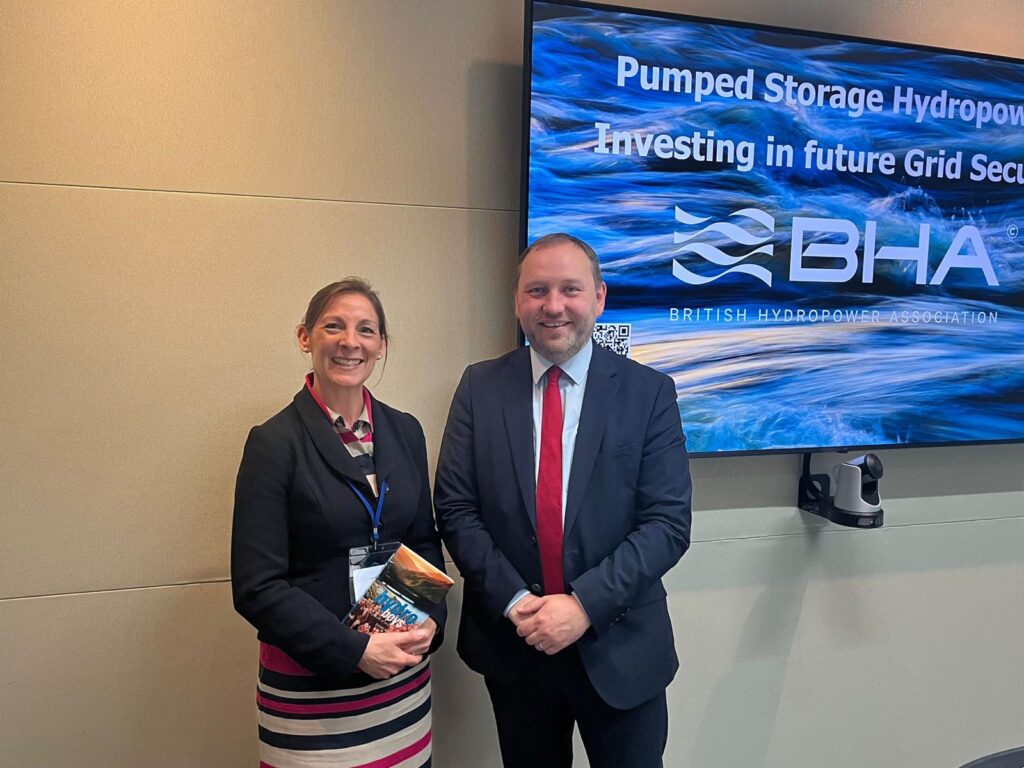Government must do more to unlock hydropower potential, says BHA

Ian Murray & Kate Gilmartin at the BHA's recent event
The British Hydropower Association has today called on the Government to do more to unlock the potential for Hydropower and Pumped Storage Hydro (PSH), if the UK is to reach its net-zero target by 2030.
It follows the announcement today (Wed) by the Secretary of State for Energy Security and Net Zero, Ed Miliband, to increase the budget for this year’s renewable energy auction by £500 million, taking it to over £1.5 billion.
Kate Gilmartin, CEO of the British Hydropower Association, said: “Although the BHA welcomes the UK Government’s clear commitment to deliver more renewable energy generation to meet their target of decarbonising the grid by 2030, this is only one piece of the puzzle.
“Large scale generation is hampered by grid constraints and unlocking Pumped Storage Hydropower will be key to reducing curtailment and rebalancing costs.
“There is still no support for sub-5MW generation like Hydropower which will be critical to decarbonising across the distribution network as rural communities look to decarbonise transport and heat, putting significant additional load on the grid.
“The Government must follow up with an holistic approach that factors in the entire network and the ramping up of electrification of transport, heat and industry.”

Earlier this week the BHA and Scottish Renewables signed a joint letter to Mr Miliband, as well as his cabinet colleagues Ian Murray, the Secretary of State for Scotland, and Jo Stevens, the Secretary of State for Wales, urging the UK Government to support the deployment of long-duration electricity storage (LDES), including pumped storage hydro (PSH).
In the letter, co-signed by many major developers of PSH in the UK, the trade bodies call on the UK Government to urgently introduce a ‘cap and floor mechanism’ for LDES to enable the delivery of the PSH pipeline which currently stands at more than 9GW of capacity, including several shovel ready projects.
The ‘cap and floor’ is designed to unlock investment by striking a balance between commercial incentives and appropriate risk mitigation for project developers. The ‘floor’ provides a minimum revenue certainty for investors, with a regulated limit, or a ‘cap’ on revenues to avoid excessive returns to developers.
With the delivery of a LDES ‘cap and floor’ mechanism, PSH can play a key role in supporting the UK Government’s net-zero targets and helping secure Britain’s clean energy future.
PSH is essential for storing energy from variable renewable sources like wind and solar, ensuring power availability when demand is highest.
To enable the delivery of the LDES ‘cap and floor’ mechanism, the industry is urging the UK Government to:
- Publish its response to the 2024 LDES consultation by August, confirming the decision to develop a cap and floor mechanism.
- Commit to establishing a policy framework by the end of 2024, with a consultation on the scheme’s detailed design in early autumn.
- Commit to opening the first application window for LDES technologies in early 2025 at the latest.
Image: Ian Murray with Kate Gilmartin at the BHA’s recent event





